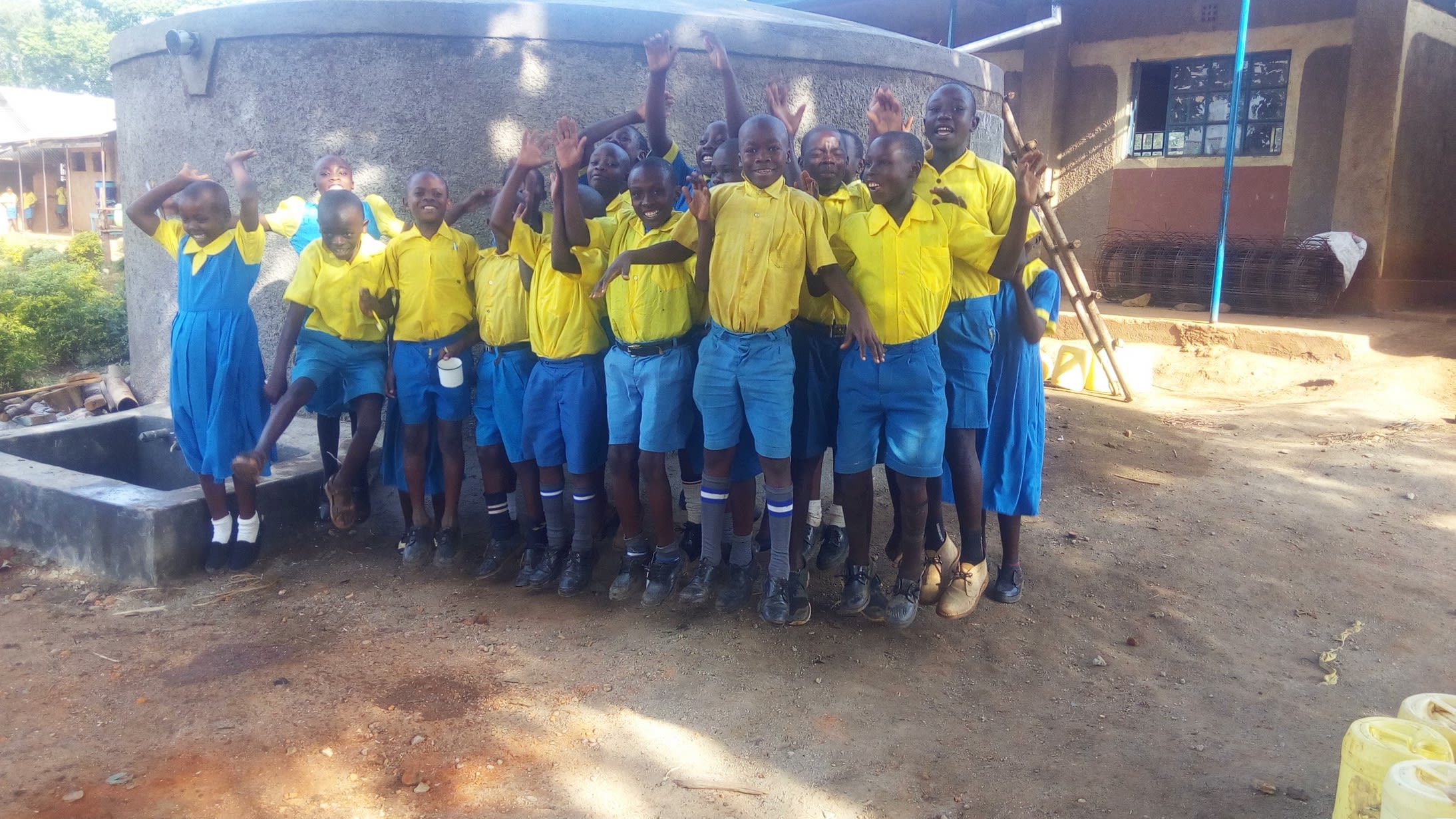Munyanda Primary School opened in 1984. It is located in Kakamega County, Kenya. The total enrollment is 604 students, taught by 12 teachers. The school also employs three support staff. (Editor's Note: While this many people may have access on any given day, realistically a single water source can only support a population of 350-500 people. To learn more, click here.)
A normal day at Munyanda Primary School begins at 6 in the morning when pupils arrive to do their assigned cleaning chores. Normal lessons begin at 8am and go until 4:30pm when students return home to help their parents with other chores.
Most of the people living around the school are farmers who grows crops like maize, beans, and potatoes. While their children are away at school, women continue with domestic chores at home while men go to find casual jobs within the community.
Water
The school is connected to a tap system that's run by the government. However, this tap is rationed, metered, and often turned off entirely during the dry season. When the tap isn't working, students are required to bring a container of water with them to school.
There has been no visible improvement in health from the tap's water purely because it is never functional long enough. The water brought by each student is either gathered at home or along the way. It's quality is highly questionable, for the school reports a high level of waterborne diseases like typhoid. They claim the resulting absences are the main reason why academic performance is so low here. "Performance of this school is attributed to various factors; the most being water and health. Inadequate and unsafe water supply has made most students to contract water-related diseases, thus ending up missing several lessons. This has lowered the school mean grade, thus poor performance. We seriously need to partner and address this vise," said Headteacher Aggrey Imbwaga.
Sanitation
The latrines are not in good condition, nor are there any hand-washing stations. Right now, there is one latrine for every 50 students!
Here's what we're going to do about it:
Training
Training will be held for two days. The facilitator will use PHAST (participatory hygiene and sanitation transformation), ABCD (asset-based community development), CTC (child to child), lectures, group discussions, and handouts to teach health topics and ways to promote good practices within the school. The CTC method will prepare students to lead other students into healthy habits, as well as kickstart a CTC club for the school.
Hand-Washing Stations
This CTC club will oversee the new facilities, such as hand-washing stations, and make sure they are kept clean and in working condition. The two hand-washing stations will be delivered to the school, and the club will fill them with water on a daily basis and make sure there is always a cleaning agent such as soap or ash.
VIP Latrines
Two triple-door latrines will be constructed with local materials that the school will help gather. Three doors will serve the girls while the other three serve the boys. And with a new source of water on school grounds, students and staff should have enough to keep these new latrines clean.
Rainwater Catchment Tank
A 50,000-liter rainwater catchment tank will help alleviate the water crisis at this school. The school will also help gather the needed materials such as sand, rocks, and water from the spring for mixing cement. Once finished, this tank can begin catching rainfall that will be used by the school’s students and staff. Students and staff will no longer be put in an extremely difficult position when the they turn the tap and no water comes out.
We and the school strongly believe that with this assistance, standards will significantly improve. These higher standards will translate to better academic performance!
This project is a part of our shared program with Western Water And Sanitation Forum (WEWASAFO). Our team is pleased to provide the reports for this project (formatted and edited for readability) thanks to the hard work of our friends in Kenya.

 Rainwater Catchment
Rainwater Catchment
 Rehabilitation Project
Rehabilitation Project































